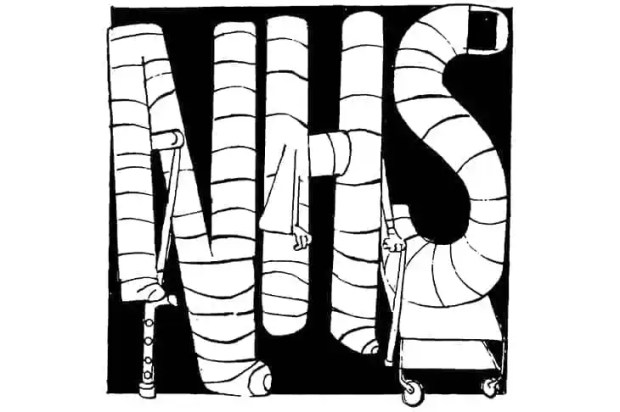Using differences in coronavirus death rates between countries to draw out policy conclusions is becoming a very popular pastime. Unfortunately, as Michael Baum has pointed out already in The Spectator, it is rarely a productive one. Over the weekend, Dr Elaine Doyle of the University of Limerick tried her hand, arguing that high death rates in the UK relative to Ireland reflected badly on the UK policy approach to tackling the virus.
At the time of writing, the UK has reported 12,868 hospital deaths of coronavirus patients, a rate of about 193 per million, while the Republic had reported 435 hospital deaths, a much lower rate of about 89 per million.
But the UK is a very different country to Ireland. Much is still unknown about the virus but it seems likely that the virus may hit some ethnic minority groups disproportionately, while population density and rates of international travel are key factors in the speed of spread. These all suggest reasons why mortality rates may be higher in the UK than Ireland.
Perhaps Dr Doyle would have been better looking at mortality rates in Northern Ireland on the grounds that it is much closer geographically and culturally to the Republic than the rest of the UK. But the Northern Irish hospital death rate so far is 83 per million, slightly lower than their southern neighbours. Should we conclude from those figures that Northern Ireland’s decision to close schools much later than in the Republic of Ireland was the right one? Of course not. Evaluating coronavirus policy at this point in the crisis is a tricky job. Doing so on the basis of differences in death rates is just daft.
Apart from demographic and cultural differences, countries may be at different points of the virus cycle meaning a comparison at a single point in time is meaningless.
The case of Sweden where bars and schools have stayed open is another good example. People have not been slow to blame higher Swedish death rates relative to those in Norway or Denmark on the more relaxed lockdown in Sweden. One could just as easily point out that Swedish death rates are much lower than in countries with very strict lockdowns such as the UK, France and Germany. You also need to take account of the fact that Swedish death figures include people in elderly care, not just in hospitals, and that the country has been hit by an unfortunate spike of cases in care homes.
Looking at trends over time can be more informative, but even here we have to be careful. Sweden announced a record 284 deaths earlier this week, surely proof that their more relaxed policy is leading to an explosion of deaths?
In fact, most of the deaths are simply updating figures from the Easter holiday period when reporting is very slow. Unlike some countries, Sweden publishes deaths by day of occurrence which gives us a better idea of what is happening. Reporting delays mean the data are only reliable up to the 13 April but it is clear that deaths in Sweden have passed their peak and, if anything, are on a downward trend.

To back this up, new cases are also decreasing while numbers of patients in intensive care units (ICU) are steady: there is no explosion in Swedish deaths on the horizon.

Undoubtedly there will be many lessons to learn from how different countries have tackled the coronavirus crisis. Once things have settled down, countries’ death rates will be an important metric to help evaluate performance. Even then, drawing out causal effects of different policy approaches on deaths will not be easy. In the middle of the crisis, it could actually be dangerous.


















